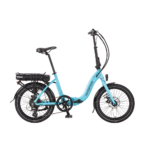After all this time, they seem to have fixed it:

 www.gov.uk
www.gov.uk


Exactly, so where is there a comprehensive definition of throttles and "walk assist" function?That section is not defining throttles comprehensively, it only sets out to clarify "twist and go".
It's a typical piece of government writing: only state the change, and leave the reader to piece it all together. Their reasoning is probably to avoid any possibility of mismatching sources leading to confusion, and guarantee instead the confusion of partial information.Exactly, so where is there a comprehensive definition of throttles and "walk assist" function?
Correct. That's the way it should be, since throttles are allowed as long as they're not twist and go.That section is not defining throttles comprehensively, it only sets out to clarify "twist and go".
Yes indeed, and it is the potential difference in interpretation without a definitive, unambiguous legal statement that concerns me if engaging with a uniformed human life form!We don't 'make it difficult', we are living examples of the differences that exist between outwardly similar lifeforms.
As long as walk assist is only applied by a fail safe method such as Off if released, it isn't an EAPC problem. Walking with such a vehicle if its weight is below 400 kilos is covered by the Pedestrian Controlled Vehicle regulation, requiring no licence or special permission, and that speed limit is 4mph, slightly faster.It's still not crystal clear though - at least to me anyway.
It doesn't refer specifically to conversions, but my converted bikes don't have a "plate", and the Yosepower motors do not have the maximum speed marked on them, so they don't comply?
The section on throttles is vague. It's obvious that "twist and go" full power throttles are not allowed, but looking at footnote 2 -
"‘Walk assist’ functionality (where the speed doesn’t go above 3.7 mph) is outside the scope of type approval."
I take that to mean that type approval is not needed for such a function but it doesn't state that it is legal to have one on a "normal" EAPC. I have a KT controller set up so that a "walk assist" or "start assist" throttle (i.e without pedalling) is active up to 3.7mph, and thereafter with pedalling up to 15.5mph. I had assumed that this was within legal requirements, but the regulations as detailed will not help me convince a regular copper if stopped?
I really like the way you put that.We don't 'make it difficult', we are living examples of the differences that exist between outwardly similar lifeforms.
My mind's eye always rushes to add another n after the i in that word!Yes indeed, and it is the potential difference in interpretation without a definitive, unambiguous legal statement that concerns me if engaging with a uniformed human life form!
Conversion status is known and not of uncertain status.Conversions are, I think nowhere mentioned in regulations, so of uncertain status.

@flecc to the rescue again!Conversion status is known and not of uncertain status.
As I've explained in my comprehensive post on EAPC law, they were subject to Single Vehicle Approval (SVA), now known as Individual Vehicle Approval (IVA).
Among many others this covers Amateur Built Vehicles.
This means that to be legal, they should be submitted to an approved vehicle testing station to gain approval. Any and every unsubmitted and unapproved conversion can be treated as illegal by any UK court.
Here is the link for advice and a manual:

Vehicle approval
Type approval, individual (IVA), motorcycle single vehicle approval, voluntary approval, certificate of initial fitness, accessibility approval, fees, forms, replacement certificateswww.gov.uk
And here is an extract of my posted advice referred to above:
Kit Motors
Be aware that hardly any of the above applies to kits or any home construction, the regulations only being for manufactured pedelecs. So both individuals and suppliers operate in a legal vacuum in which all try to supply and/or use as closely conforming to the complete e-bike law as they can, trusting that is acceptable. That has always worked throughout all of Europe and the UK without any mention of a possible prosecution, providing the three main points of the law are adhered to, i.e. 250 watts maximum assist, 15.5 mph maximum assist speed and power only when pedalling.
However, I can tell you the legal way of dealing with a kit, athough no-one has ever done it:
1) Buy and fit the motor kit.
2) Make an appointment at an approved vehicle testing station, paying the £55 test fee.
3) Most often the purpose of this is to get an SVA (Single Vehicle Approval), entitling it for use as a type approved motor vehicle. However your intention will be to get the inspector to agree that it meets the pedelec requirements so is exempt from being a motor vehicle and is approved as a pedelec.
However, if you get and accept SVA approval as well at the same time, as specified earlier in getting legal permission, you will be able to have a fully acting throttle on a post December 2015 pedelec with it still considered a bureaucracy free pedelec, a bonus. I repeat though, no-one to my knowedge has ever done this to create a kit pedelec so it's never been necessary, but it is the DfT specified correct way when creating any motorised vehicle from more than one vehicle or from parts.
N.B. The DfT is increasingly referring to SVA as IVA (Individual Vehicle Approval), so you might need this for online linking in future.
alternatively, the supplier would issue certificate of conformity.So there is a way: technically every conversion 'should' have SVA/IVA, so far not enforced and highly unlikely to be challenged.
I'm confident that neither the police nor the Crown Prosecution Service would consider it worthwhile, however serious the case. That has been the practice in cases of death involving "electric" bikes to date, preferring the least serious charge aimed at the rider's behaviour rather than the vehicle law.@flecc to the rescue again!
So there is a way: technically every conversion 'should' have SVA/IVA, so far not enforced and highly unlikely to be challenged.
I suppose if the government wanted to, they could get tougher on that if future circumstances e.g. growth in numbers provided sufficient justification.
Arguably - do you suppose this could ever happen? - a prosecution could result if a very bad outcome was definitively laid at the door of a conversion without SVA?





